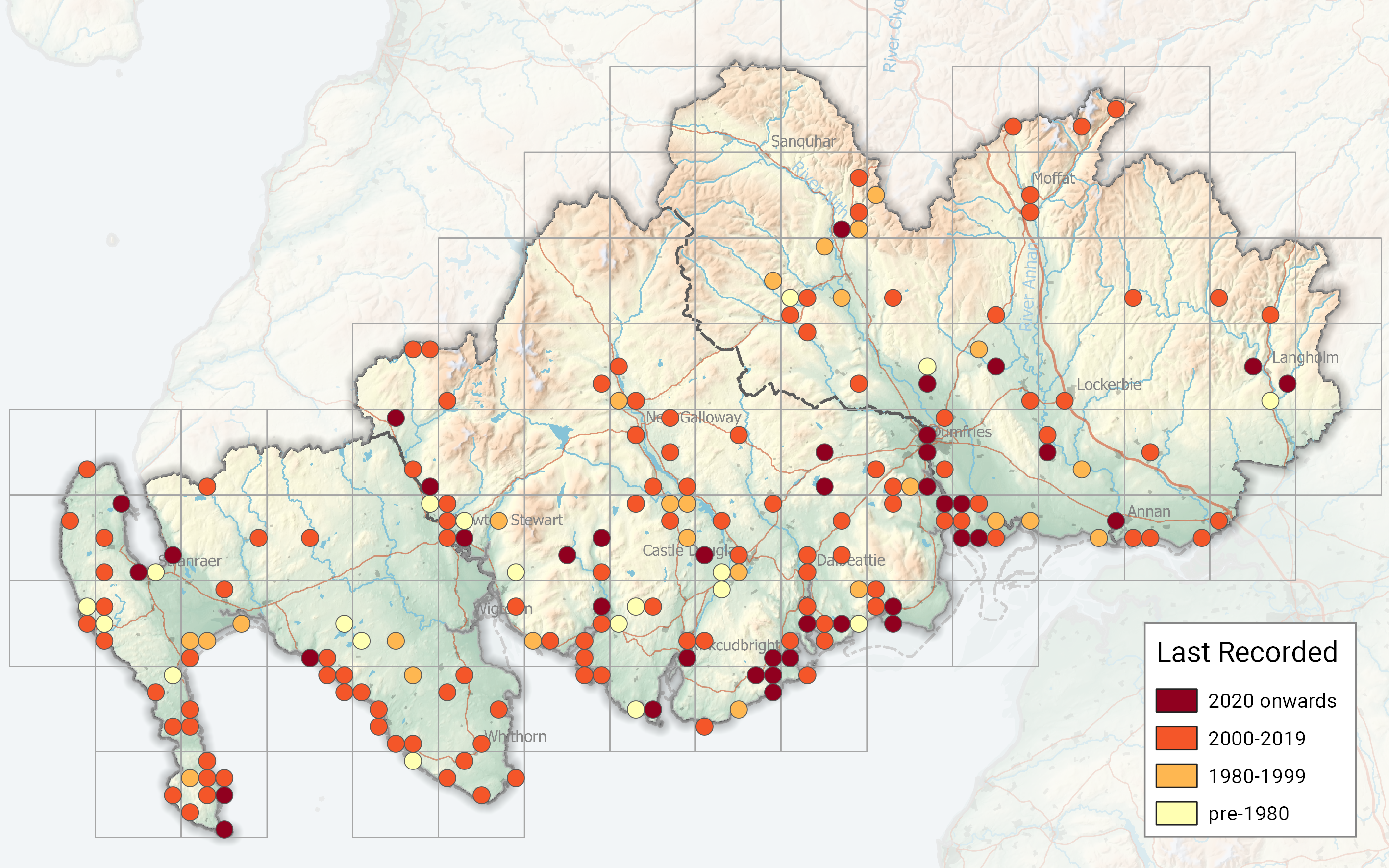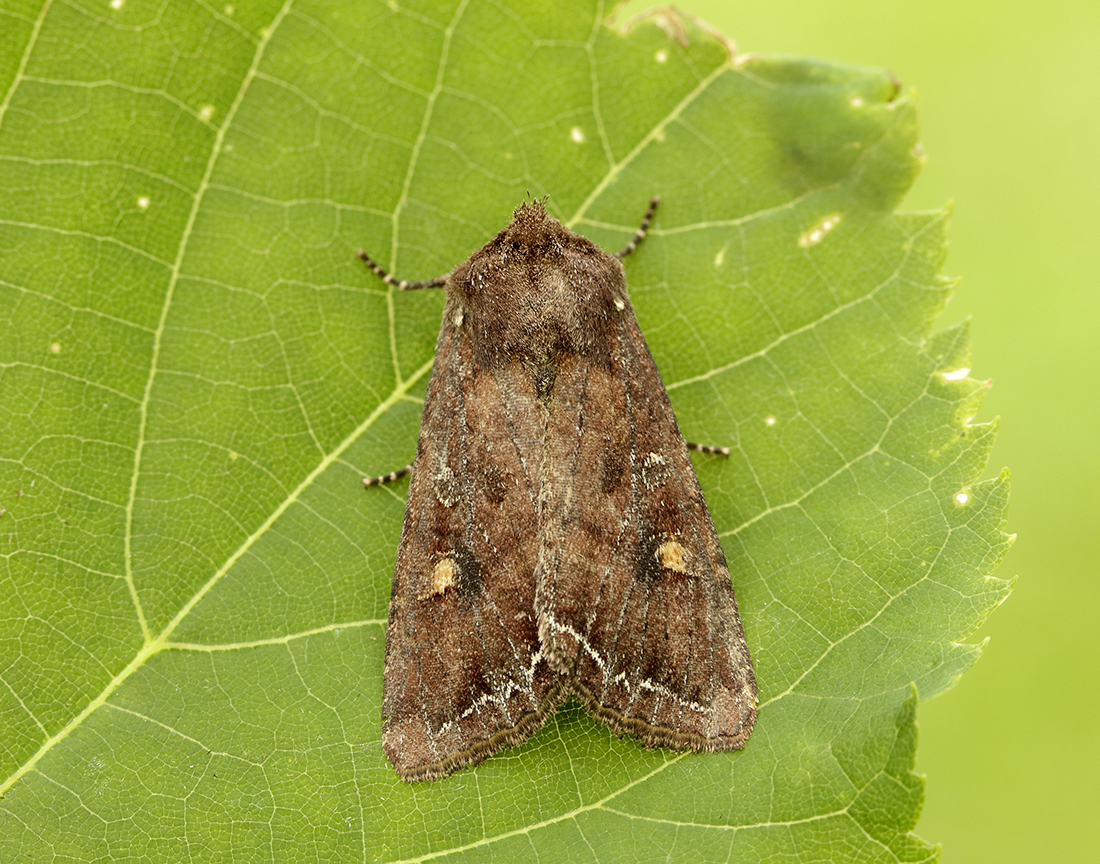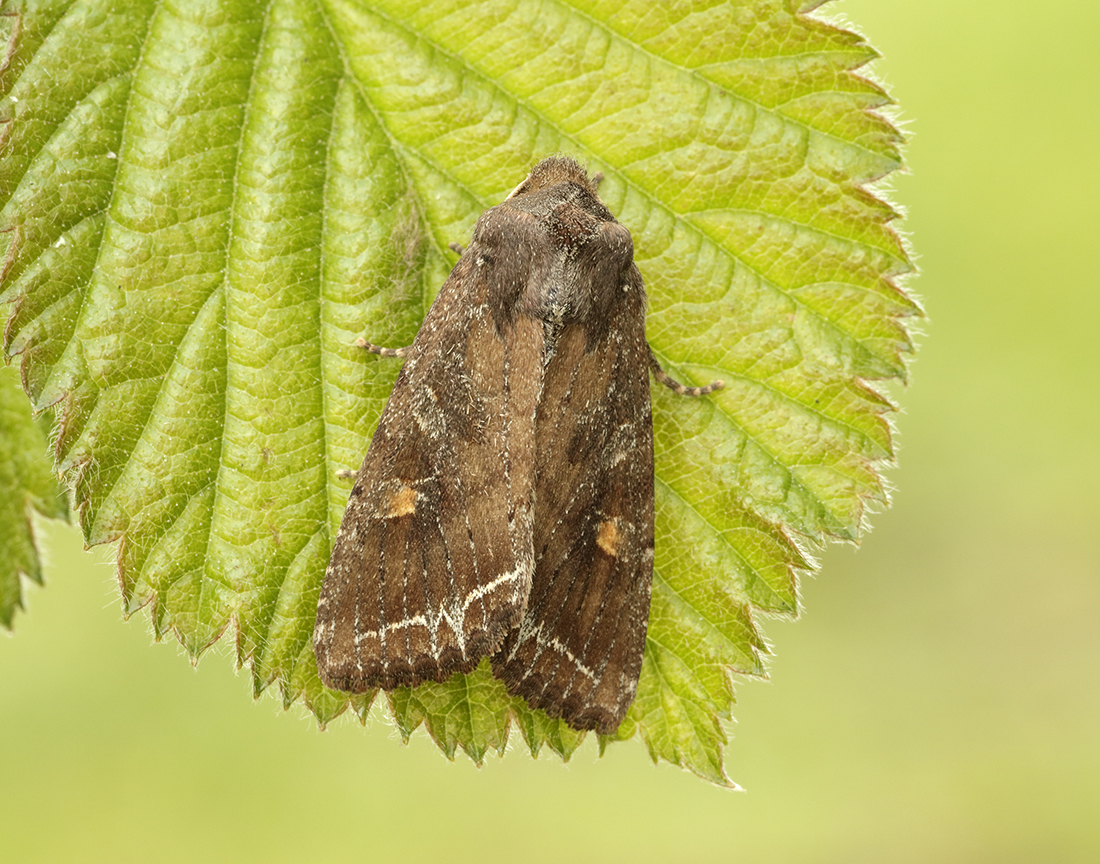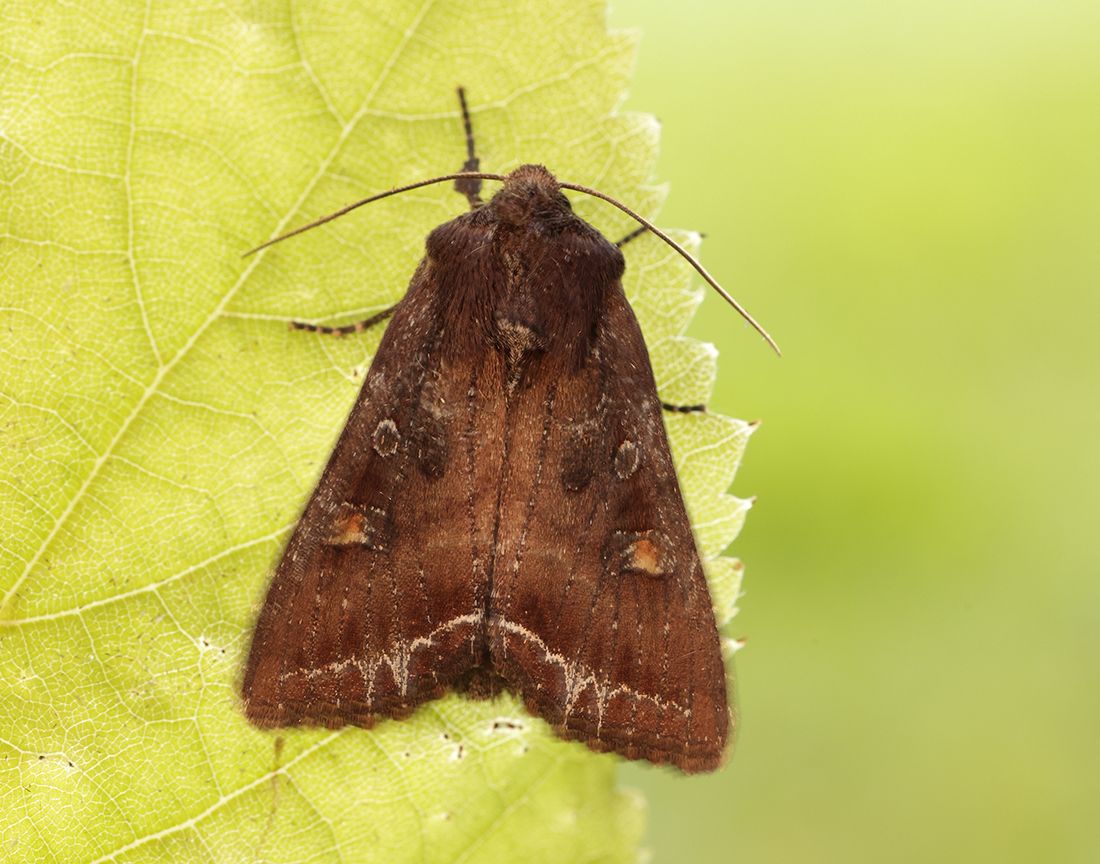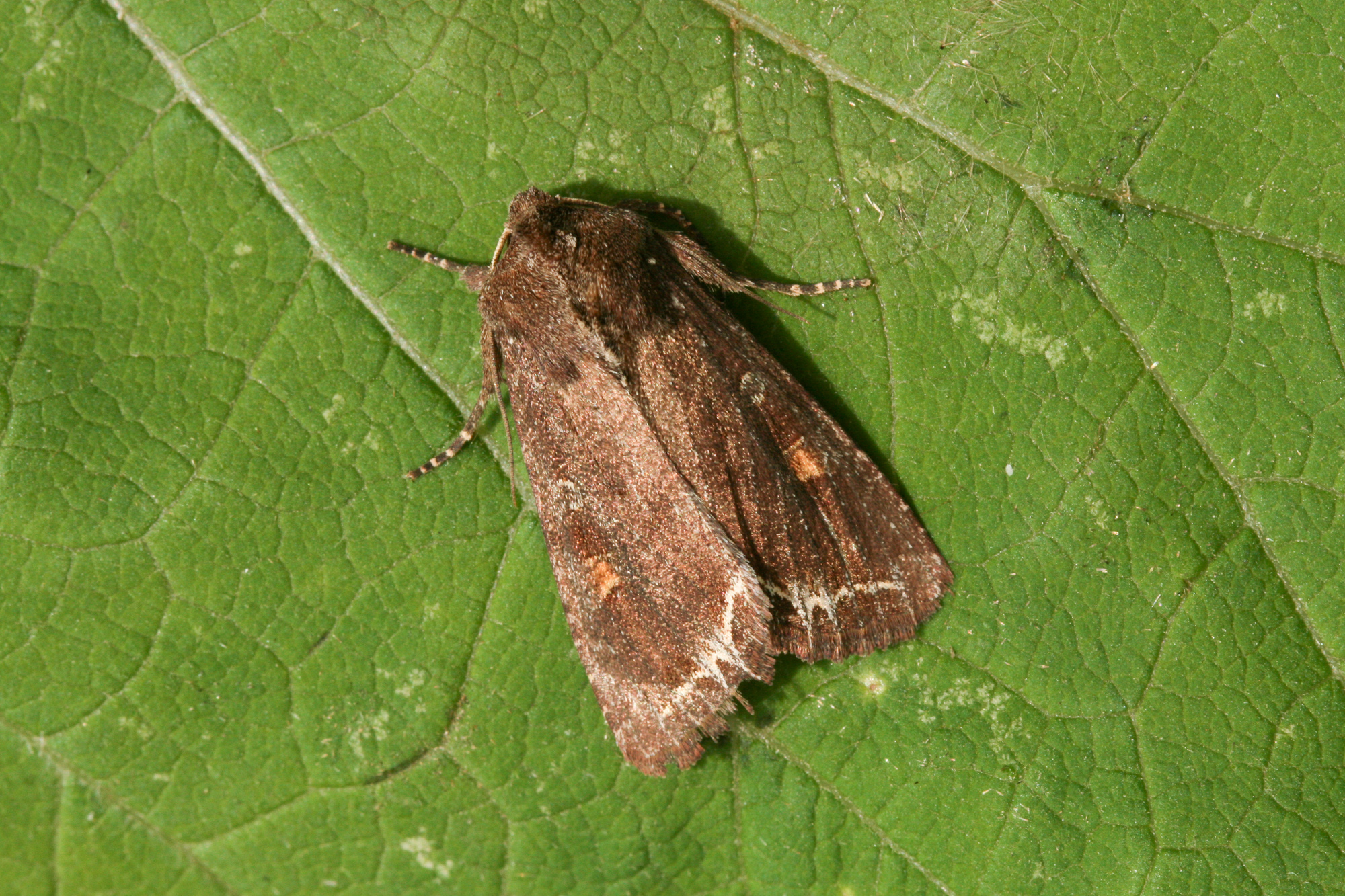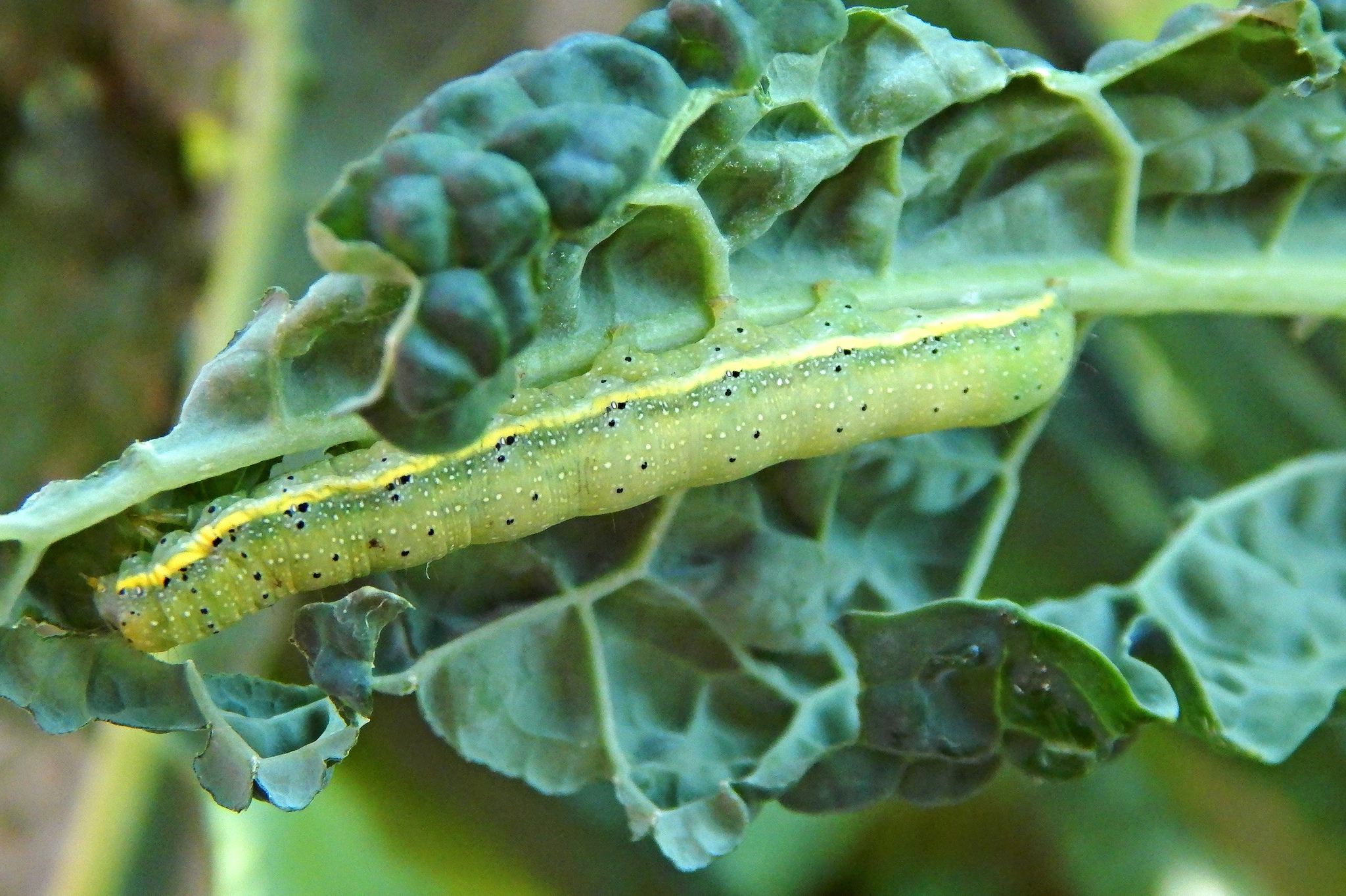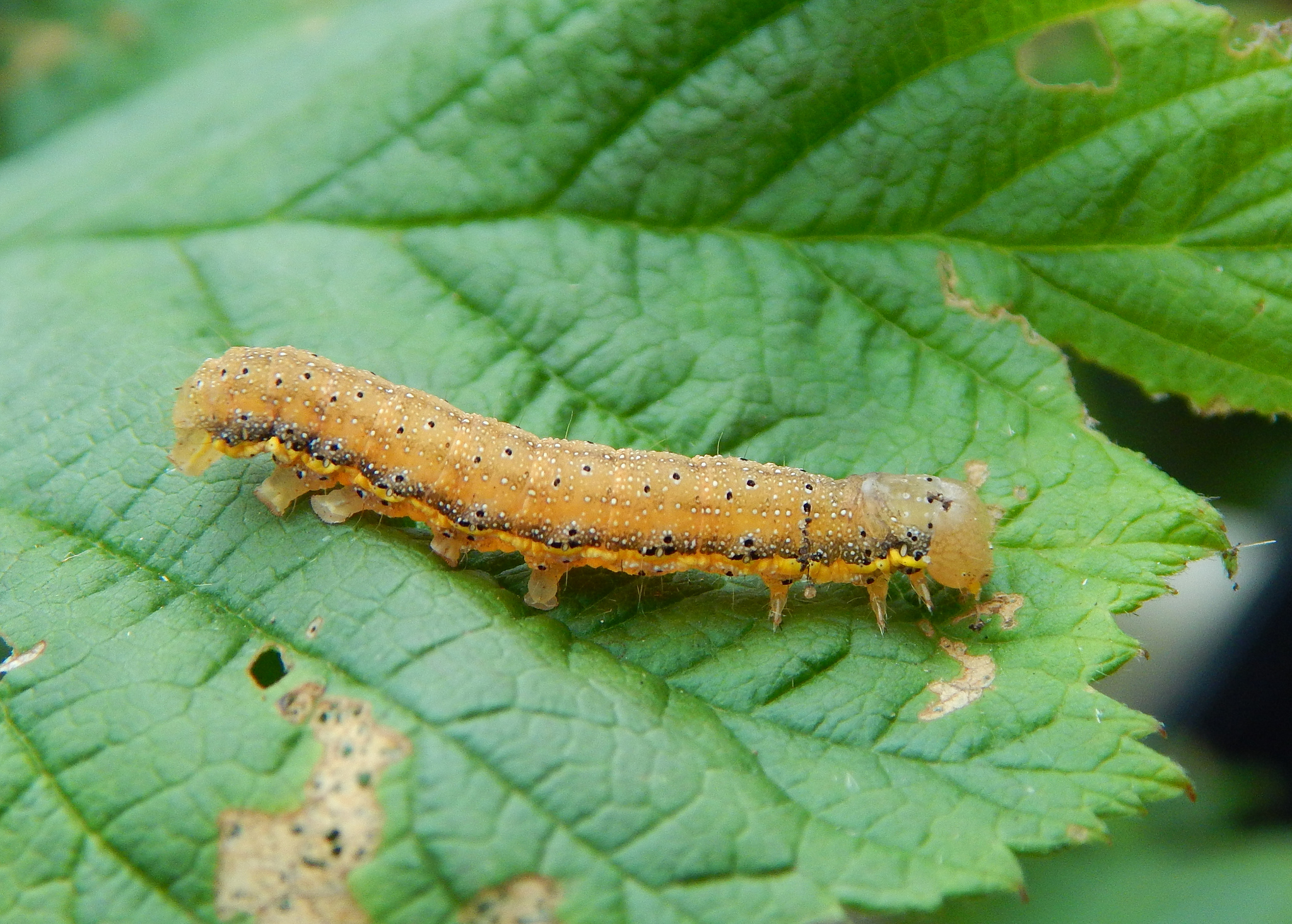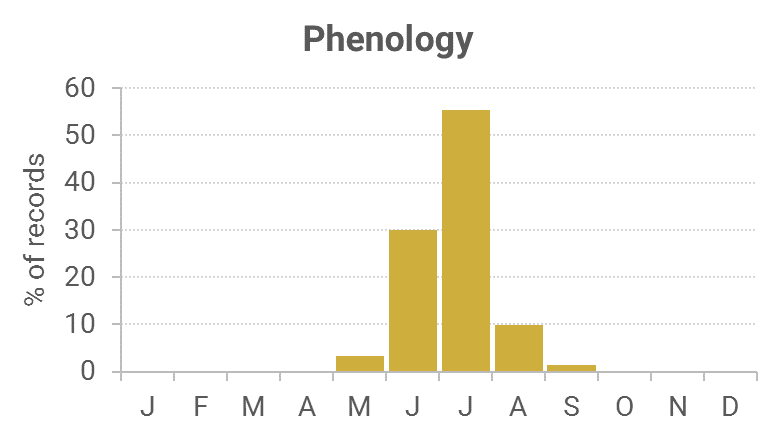Identification
The orange blotch in the kidney-mark (the brown-eye) and the fine white outer cross-line forming a W on the warm brown forewings is diagnostic.
Recording Method.
Attracted to light, also comes to sugar and flowers.
Life cycle
One generation. Overwinters as a pupa underground. Larva occur during June to October, feeding at night, hiding by day.
Larval foodplants
Larvae also feed on wide range of other garden and wild plants.
Habitat
Most habitats, including gardens where it can be a pest of tomatoes.
History
Lennon (1863) stated it was common in his ‘List of Lepidoptera taken near Dumfries.’ K. J. Morton of Edinburgh (1900) whilst on a visit in July 1899 to Wigtownshire had found this species in the Monreith area. Gordon (1913) stated it was very common and generally distributed across Wigtownshire. Earliest date was 12th June 1897. Evans received specimens from Mowat, the Killantringan lighthouse keeper to aid his insect migration studies.
Sir Arthur Duncan (1909-84) during his lifetime had found it at Closeburn, Tynron and Castlehill, Dumfries (all VC72). Archibald Russell (1944) listed it as occurring near Gatehouse of Fleet (VC73) during the years 1942-43.
During 1974-92 the seven Rothamsted stations provided most of the records during that period, but for a common moth it did not appear to be common. Personal trapping had produced lots of records from Kirkton, Durisdeer and Carsfad, near Dalry from 1995 to 2010.

